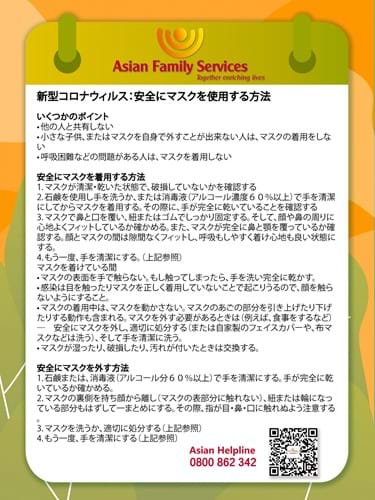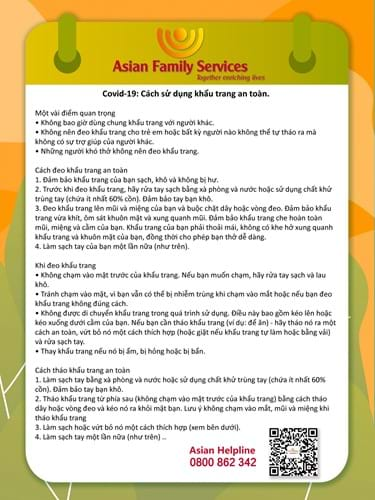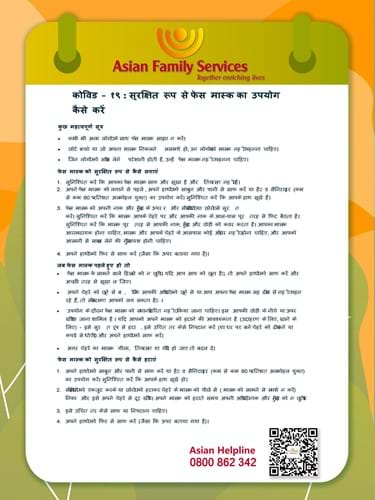COVID-19 Week 13 - How to use a face mask safely
Key points:
- Never share face masks with other people.
- Face masks should not be worn by young children or anyone unable to remove them without assistance.
- Face masks should not be worn by people who have trouble breathing.
How to safely put on a face mask:
- Ensure your face mask is clean and dry and is not damaged.
- Before putting on your face mask, clean your hands with soap and water or use hand sanitiser (containing at least 60 percent alcohol). Ensure your hands are dry.
- Place the face mask over your nose and mouth and secure with ties or loops. Make sure the mask fits snugly, moulded to your face and around your nose. Make sure the mask fully covers your nose, mouth and chin. Your mask should be comfortable, with no gaps around the mask and your face, and allow you to breathe easily.
- Clean your hands again (as above).
While wearing a face mask:
- Do not touch the front of the face mask. If you do, clean your hands and dry thoroughly.
- Avoid touching your face, as infection can still be introduced by touching your eyes or if you are not wearing your face mask correctly.
- Face masks should not be moved during use. This includes being pulled up or pulled down below your chin. If you need to remove your mask (for example, to eat) - remove it safely, dispose of it appropriately (or wash it if you are using a home-made facial covering or cloth mask) and clean your hands.
- Replace the face mask if it becomes damp, damaged or soiled.
How to safely remove a face mask:
- Clean your hands with soap and water or use hand sanitiser (containing at least 60 percent alcohol). Ensure your hands are dry.
- Remove the face mask from behind (do not touch the front of the mask) by untying ties or removing loops and pull it away from your face. Be careful not to touch your eyes, nose and mouth when removing your mask.
- Clean or dispose of it appropriately.
- Clean your hands again (as above).
We have translated this information into the following languages: Chinese, Korean, Japanese, Vietnamese, Thai and Hindi.





View or Download resources
COVID 19 Week13 Chinese COVID 19 Week13 Korean COVID 19 Week13 Japanese COVID 19 Week13 Vietnamese COVID 19 Week13 HindiCategories
COVID-19Is this information useful ?